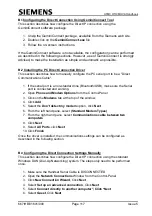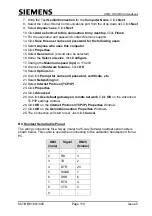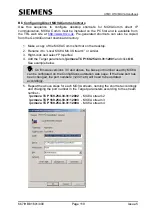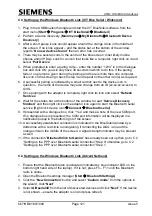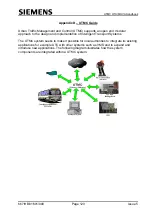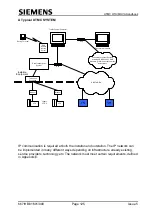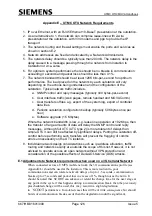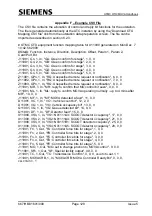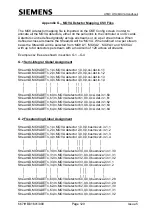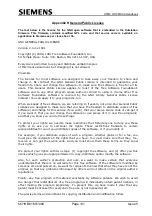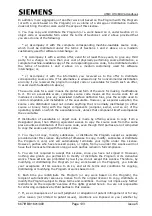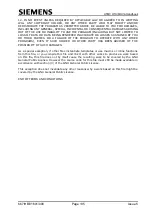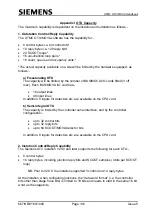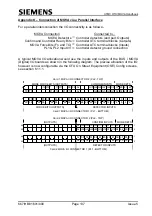
UTMC OTU/MOVA Handbook
667/HB/31601/000
Page 126
Issue 5
Appendix E – UTMC OTU Network Requirements
1. IP over Ethernet, with an RJ45 Ethernet 10-BaseT presentation at the outstation.
2. As an alternative to 1, the network can comprise lease-lines with 2-wire
presentation at the outstation, with V34 modems and ppp to provide the IP
transport.
3. The network routing and firewall settings must enable the ports and services as
shown in section E.2.
4. Network addresses are fixed and allocated by a Network Administrator.
5. The network delay should be typically less than 200mS. The network delay is the
delay caused to a message passing through the network from Instation to
Outstation or vice-versa.
6. For optimum system performance there should be no breaks in communication
exceeding 4 seconds and packet loss should be less than 0.1%.
7. The network bandwidth should be at least 128K bits-per-second for optimum
performance. The load placed on the network by each outstation will vary
depending on the actions being undertaken and the configuration of the
outstation. Typical network traffic includes:-
a. SNMP control and reply messages (typically 400 bytes-per-second)
b. User interface traffic (web pages, remote handset and MOVAComm)
c. User transfers of files e.g. export of the system log, export of controller
data files.
d. Periodic outstation configuration backup (typically 50 Kbytes once per
hour)
e. Software upgrade (1.5 Mbytes)
Where the network bandwidth is low, e.g. lease line operation at 19.2Kbps, then
the transfer of large amounts of data will delay the SNMP control and reply
messages. Although full UTC (UTC type 2) is more tolerant of delays than
simple UTC it can still be affected by significant delays. Putting the outstation off-
control before performing such transfers will prevent the flagging of comms
errors unnecessarily on the UTC instation.
8. Individual network design considerations such as ip address allocation, traffic
routing and network security are outside the scope of this list. However, it is not
advised to operate across an open network without VPN protection and
consideration of the possible effects of Denial-Of-Service (DOS) attacks.
E.1Adjustments to Network requirements when used on a 3G Cellular Network
When connected across a UMTS mobile network the 3G communications profile (see
Appendix L) should be used at the instation. This is more resilient to poor
communications and can tolerate network delays of up to 1.5 seconds, communication
breaks up to 25 seconds and packet loss in excess of 1%, though not as the norm.
It
should be noted that
SCOOT can advance or retard the change time for the next stage at
any point in the cycle
. I
f this happens during a communication break then the previously
prescheduled change will be used, this
may
result in a slight degradation
in
`SCOOT
performance. In isolated cases this will be of little consequence but should
bursts of communication breaks occur then the degradation could be significant,






